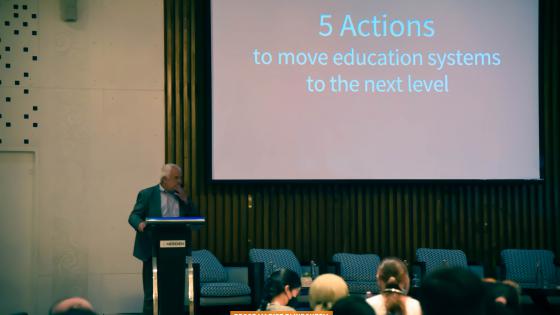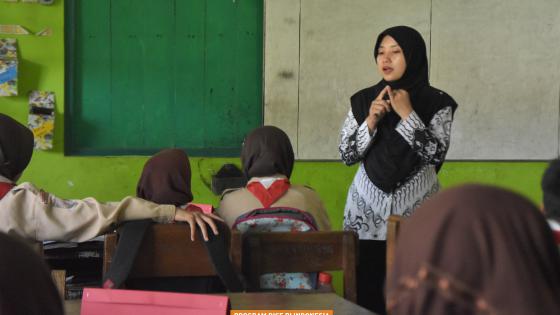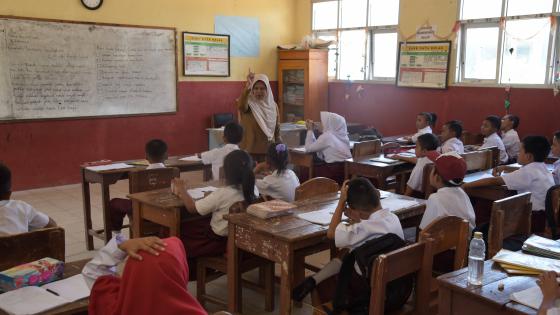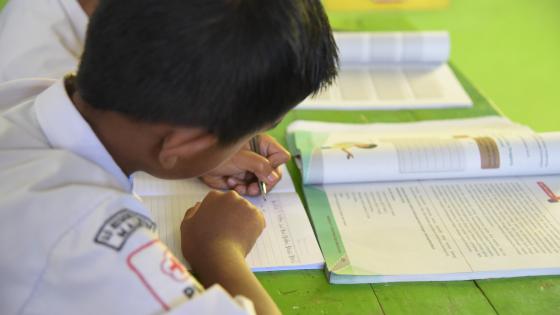Photo illustration: Novita Eka Syaputri
.
This article was originally posted on The Conversation Indonesia.
.
At the end of 2020, Indonesian Minister of Education and Culture Nadiem Makariem announced that in-person learning may be resumed in the even semester of 2020/2021 school year, which starts January 2021.
However, the decision to reopen schools to carry out in-person learning is left to local governments. Several regions have decided to reopen schools, while others put off the decision because of the surge of COVID-19 cases.
Is devolving the authority to reopen schools to local governments the right decision?
The dilemma of entrusting the authority to local governments: the risk of COVID-19 and education gap
The decision of entrusting the authority to reopen schools to local governments has drawn criticism from the public. Federation of Indonesian Teachers Associations (FSGI) and the National Child Protection Commission (KPAI) said that the central government seems to be giving up their role in handling the pandemic nationally.
Instead of flattening, the number of positive COVID-19 cases reached 750,000 in early 2021, making Indonesia the country with the highest number of COVID-19 cases in Southeast Asia. About 60% of these cases occurred in Java and were followed by several other provinces, such as South Sulawesi and East Kalimantan.
The spread of COVID-19 cases globally is mostly found in adults, and various reports show that coronavirus infections in children are rare. Most of the COVID-19 infections in children are also mild and do not require intensive care.
As of January 13, 2021, for example, COVID-19 infections in Indonesia in patients under 18 years old only amounted to 11.6% of the total cases, with a relatively low mortality rate of 2.3%.
Nevertheless, children can still be infected with COVID-19 and transmit the virus with the same transmission rate as adults.
Reopening schools may open up opportunities for spread within the school environment and transmission within the family. Children infected without showing symptoms can even go undetected when they become carriers as they are considered healthy.
The problem is that the closure of schools nationwide because of the COVID-19 pandemic since March 2020 has had negative impacts on children’s education, especially in non-urban regions.
A study carried out by The SMERU Research Institute, for example, finds that education gap is widening with the introduction of remote learning. Some areas in Indonesia do not have the adequate digital infrastructure to support students learning from home.
Although data from Statistics Indonesia in 2019 shows that 63.53% of the Indonesian population have mobile phones, internet access varies among regions. Internet coverage in Java is quite high, from 73% in East Java to 93% in Jakarta. However, outside Java, internet access varies widely from 31% in Papua to 88% in East Kalimantan.
This study also reveals that only about 50% of teachers communicate regularly with parents of low-performing students. This indicates that children with weak support systems will be more susceptible to learning loss.
In fact, for years, Indonesian students have only learned a little at school, as indicated by the declining learning outcomes from 2000 to 2014 (students’ basic numeracy at all education levels were below 40% in 2014). Students have been attending school, but they have been learning very little.
When schools are closed because of the pandemic, the existing limitations make them learn even less.
In the long term, this situation will have an impact on student learning outcomes until they reach adulthood, as well as their potential income.
That means reopening schools and resuming in-person learning is a difficult decision, but it needs to be considered given students’ far-from-ideal conditions during learning from home.
If there are no other options, narrow down the decision to the village level and prepare COVID-19 policies in schools
If in-person learning is to be carried out, several things should be taken into account in devolving the authority to reopen schools to local governments.
As case severity varies from region to region, local governments can narrow down school reopening decisions to a more micro level, for example, at the sub-district or village level. That way, considerations related to the risk of spreading COVID-19 will be more accurate and appropriate to the conditions where teachers and students live.
One additional filter that may be applicable is to reopen schools based on the education level (kindergarten/primary school/junior secondary school/senior secondary school), bearing in mind that children with different age groups have different health and educational behaviour characteristics.
Enforcing shorter learning hours with a rotating entry system is also a mechanism that schools can employ.
However, this decision must also be followed by determining different learning targets and ability assessments for students. Although in-person learning is in effect, learning activities will not be the same as before the pandemic, thus requiring pedagogical adjustment.
Accordingly, reopening schools should only be allowed if an area at the sub-district or village level has adequate infrastructure, human resources, budget, and in-person learning mechanism.
In addition, schools hoping to carry out in-person learning activities may need to establish a special committee unit that works with public health experts to ensure that strict health protocols are implemented to prevent transmission in schools.
The central government has actually set requirements (checklists) for schools wishing to execute in-person learning. It is important for local governments to strictly adhere to these checklists and check all schools in their area.
Only 45.11% of schools/madrasahs have filled out the school readiness checklists to date. Of these schools, only 41.04% are equipped with sanitation facilities.
As many regions are not yet ready for in-person learning, local governments should not make hasty decisions. Moreover, the central government must also monitor regions that decide to reopen their schools.
*Maudita Dwi Anbarani, a junior researcher at The SMERU Research Institute, co-authored this article.









